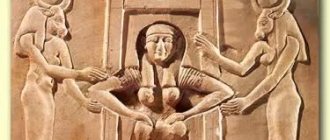How to make childbirth easy?
Pregnancy and childbirth are the most responsible and important period in the life of any woman. Happiness if they pass easily and calmly. Even greater happiness is if a woman experiences such moments several times.
Today, modern medicine can make it as easy as possible not only for pregnancy, but also for childbirth itself. Professor of the Department of Obstetrics and Gynecology of BelMAPO, Doctor of Medical Sciences Olga PERESADA spoke on the Komsomolskaya Pravda direct line about how to give birth easily, quickly and without pain.
NOBODY HAS BEEN GIVING FOR DAYS ALREADY
— My name is Anna, I’m 13 weeks pregnant. They write a lot on the Internet about epidural anesthesia; it is practiced in Europe, but I heard that it is quite dangerous for both the woman and the child. And what is the safest method of pain relief during childbirth?
— You asked a rather difficult question. Firstly, you thought about this too early, you have your whole pregnancy ahead of you. Secondly, there are now a lot of modern technologies for childbirth. Childbirth, in principle, now passes very quickly. They do not extend over a day, as they previously wrote that the sun should not rise twice over a woman. Now even the first birth lasts a little more than 6 - 8 hours. In different hospitals, doctors use similar methods of pain relief - pharmacological, electrical stimulation, and think not only about the woman, but also about the child. Because the more complex drugs you are asking about penetrate the placenta and have a certain effect on the fetus, and can also slightly lengthen the period of dilatation. Therefore, I want to do without such heavy artillery. Although it is true that such methods are used both abroad and here. This should be discussed with your doctor before giving birth.
We have many programs to prepare for childbirth, where women go to psychologists and learn to experience contractions correctly and breathe correctly. Therefore, women now come to give birth very prepared. And they often deliberately insist on natural childbirth; today, in modern language, this is a squeak, a special feature. They are even proud of it. It is to assist in natural childbirth that obstetric gel is used today.
The birth of a healthy child is happiness for any woman.
- How does it work?
— The most painful stage of labor is the dilation of the cervix. The gel helps it open up and relieves pain. And childbirth occurs much easier.
— Is the doctor doing all the manipulations with him?
— Obstetrician-gynecologist. A woman buys the gel at the pharmacy and brings it to the birth. The doctor inserts it into the vagina when the cervix opens 3 to 4 centimeters. The gel has an ointment base, it helps the cervix open, and the baby can easily pass through the birth canal.
— Is he not dangerous for the child?
- No, it is not hormonal, so it is completely safe for the baby. Its safety has been proven in clinical studies. Unfortunately, at the time when I gave birth, such a gel did not yet exist. But my daughter-in-law gave birth with the gel, and the birth was surprisingly quick and easy. After all, the gel not only relieves pain, but also speeds up labor. And another advantage of the gel is that it allows you to avoid ruptures of the perineum, which women are very afraid of. Fabrics become elastic.
— Olga Anatolyevna, my daughter will give birth in October. I wanted to know where you can give birth for free?
— In our country there are no paid childbirths, although perhaps in the near future such individual childbirths will appear. We charge extra for a comfortable stay. This happens in many maternity hospitals.
NATURAL BIRTH IS THE MOST CORRECT
- I am 24 years old. I read somewhere that the first birth should be between the ages of 20 and 24. But I don't plan to have children anytime soon. What am I risking?
— Of course, you can give birth at any age, the choice is yours. But doctors recommend giving birth at physiological times that are considered optimal for a woman’s maturation. But your right, of course, to give birth later. You just need to remember that childbirth after 30 years can be more difficult. There is even a term for 28-year-olds - “adult primipara.” Therefore, there is no point in postponing the birth of a child.
— What is the safest birth - cesarean or independent?
- Of course, the best birth is natural. And you need to tune in to this. Caesarean section is done in special cases.
— Hello, Olga Anatolyevna! I'm pregnant with my third child. The first birth took place naturally, the second through cesarean section. I want to give birth to my third child naturally. Seven years have passed since the operation. Is it possible?
- You can give birth on your own. If the pregnancy proceeds normally, if the baby lies normally, everything will work out. Even if a woman had a cesarean section during her first birth, she can give birth the second time on her own.
— I am 41 years old and 15 weeks pregnant. This will be the third child. I feel great, my tests are all good. But they send me for analysis of amniotic fluid. I heard that this test is quite painful and unsafe. Should I do it?
- How long is your break between births?
“I gave birth to my eldest at 23 years old, and my second at 30 years old. And now there will be a third one.
- How old is your husband?
- 49 years old.
— In our country and throughout the world, there is a rule: if a woman is over 35 years old and a man is over 40 years old, during pregnancy you need to undergo the genetic analysis that you are talking about. Of course, you can decide for yourself whether to do it or not. I recommend to you: talk to geneticists. Because at your age there is a greater risk of genetic abnormalities in the fetus.
— If I decide, what complications might there be? I heard that amniotic fluid can become infected.
- amniocentesis (puncture of the amniotic sac and taking a small amount of water) is done under ultrasound control with a sterile instrument. Don't be afraid of this procedure and think positive thoughts. After all, you are expecting your third child, this is so wonderful!
IT’S HARDER FOR A CHILD IN CHILDREN THAN THE MOTHER
— I’m 25 years old, I haven’t given birth yet, but I know that everyone is afraid of ruptures during childbirth. Can they be avoided?
— It’s good that you don’t reject the very need to have children. You should already think about this more specifically, don’t delay it. The younger a woman is, the more elastic her tissues are and the less likely they are to tear. And a special obstetric gel helps give birth without ruptures.
— And I plan to give birth at 30 years old. Is it late?
- It's never too late to give birth. But if you can plan this wonderful event a little earlier, it will be even better.
— I’m 22 years old and I’m giving birth very soon. I am very afraid. How can I prepare myself for childbirth?
- If you are about to give birth, you are probably already prepared, attended classes, talked to doctors. There is no need to be afraid. If you are so afraid, go into labor with the person you trust - your husband, mother, friend. It will be easier for you. And think about the child, it’s harder for him, he has more stress than you. If you think about positive things, your baby will feel better and you two will go through this process faster and easier.
— I’m pregnant for the second time, I’m 33 weeks pregnant. The first birth was easy and joyful, I safely gave birth to a healthy child. How much does the first birth affect the outcome of the second?
- Let's hope that your second birth will be just as wonderful.
- How quickly can I give birth?
— Many factors influence this. If the first birth took place quickly, then the second may even be rapid. You may need to be hospitalized beforehand.
- How far in advance? Can a doctor tell you this or is it only known from above?
“Everything happens naturally from above.” But the doctor will focus on the condition of your cervix; it begins to open two weeks before birth.
— Why do doctors pierce the water and how can we convince them not to do this?
- Why do you need to convince doctors? They study for six years, then train for another three years. All these years they have been studying to know how to perform childbirth correctly. Puncture of the amniotic sac, or amniotomy in medical terminology, is an entire obstetric operation; it is never performed without indications. This could be the condition of the fetus, the dilatation of the cervix, or the woman’s high blood pressure - all this is described in the entire textbook on obstetrics. Just trust the doctors. For example, during the second birth, the head is not pressed for a long time, so if you open the amniotic sac on your own, there can be quite dangerous moments for the baby.
— Olga Anatolyevna, my niece is already 8 months pregnant. She constantly lacks air. What are these symptoms?
— Most likely, she has a disorder of the cardiovascular system. She probably has tachycardia.
— She has mitral valve prolapse.
“She definitely needs to go to the hospital.” I highly recommend doing this. Her heart can't handle the extra volume of circulating blood. She should be helped to cope with this in the hospital.
- Isn’t this dangerous?
- No, but it is necessary to undergo treatment.
- Olga Anatolyevna! My friend gave birth using obstetric gel - she really liked it. Please tell me, do you have experience using obstetric gel?
-Today there are methods that will help avoid physical pain, while helping both mother and child to easily endure childbirth. One of the latest developments in modern medicine is obstetric gel, which has a number of strong advantages when used in natural childbirth. When using this gel in the obstetric clinic in 3GKB, we noted a positive effect in childbirth in those women who gave birth using obstetric gel - this and absence of ruptures, acceleration of the 1st and 2nd stages of labor, and reduction of pain during childbirth. Childbirth is quick and easy.
— Tell me where I can learn about obstetric gel in more detail,
— You can ask your obstetrician-gynecologist at the antenatal clinic.
www.dianatal.eu/russia/
Are second births different from first births?
There is an opinion among women that the process of delivery during subsequent births occurs much faster than with firstborns. Undoubtedly, there are differences between the first births and the second. A woman preparing to become a mother for the second time already knows how the whole process works, takes into account her past mistakes, and is mentally prepared for everything that happens. She knows when to push and distributes her efforts correctly. However, it is impossible to predict the time and outcome of both the first and subsequent births.
With a second caesarean section, the body recovers faster. It is easier for mothers to establish breastfeeding and milk comes earlier. Nipples are less sensitive, pain disappears.
If you become pregnant again, the risk of precipitate labor increases. Therefore, a second-bearing woman, after the first signs appear, should seek medical help as soon as possible.
Advantages and disadvantages of second birth
Repeated births, like everything else in the world, are known by comparison, and they need to be compared with the first. It is worth clarifying that both processes occur individually for each woman - an easy first birth does not guarantee the same second birth, and complications during the birth of the first child are not always repeated.
Differences between the second birth and the first:
- toxicosis torments multiparous women much less frequently due to the body’s adaptation to the pregnant state;
- The abdominal muscles stretched by the first pregnancy make the expectant mother’s belly noticeable to others earlier. During the second pregnancy, due to weakened muscles, the abdomen is located slightly lower than during the first;
- The baby's movements become noticeable earlier than when carrying the first child. Mostly due to the fact that the second time a pregnant woman is better able to distinguish them from intestinal peristalsis;
- weight gain by mother and fetus is more active the second time, so younger children at birth often weigh more than firstborns;
- so-called false or training contractions are sometimes absent in multiparous women;
- The second birth lasts less than the first due to the preparedness of the birth canal for the passage of the baby.
The moment of the first meeting between the first-born and the second child is very touching, and older children are happy to help care for the babies, for example, feeding diapers
Don't worry if you find that your description of a typical repeat pregnancy is different. For example, in our family there are hereditary difficulties with bearing boys; sons are born prematurely - before 37 weeks - and are of low birth weight. Our mother has two daughters born at term, my younger sister is 50 g heavier. And the grandmother, who gave birth to a son second after the birth of her daughter, lamented that the newborn Uncle Sasha weighed a little more than 2 kg. The gestational age in 1961 could have been placed incorrectly. But my son and nephew were born exactly a month before the expected due date (EDD) and weighed 2330 and 1900 grams, respectively. My godfather’s youngest son weighed 500 grams less than his older brother, because during pregnancy they traveled halfway across Russia by train to the Far East and back to Moscow, escaping the war in their hometown. Nervous tension and lack of nutrition resulted in underweight (2800 grams). But not only pathologies are to blame. The Dukes of Cambridge's second child was born 100 grams lighter than the first, because girls, and this was Charlotte, most often weigh less than their brothers at birth. As you can see, every rule has exceptions. Don't rush into despair.
Video: how the second birth differs from the birth of the first child
Table: pros and cons of second birth
| Advantages | Flaws |
| The cervix, having experienced childbirth, opens faster by about 1.5–2 cm/hour versus 1 cm/hour during the first birth. Thus, the painful process of contractions is reduced, and the woman in labor has more strength for other stages of childbirth. | A woman is sure that she knows and controls everything, but this becomes a hindrance when the birth process does not go according to plan. |
| The second birth is easier than the first and does not deplete the body as much as the third and subsequent ones. | Too little or too much time between births can cause complications. |
| A pregnant woman is psychologically prepared for her second birth better than for her first, since there is practically no fear of the unknown. All stages and rules of behavior in them are familiar from our own experience. | It is possible for the stitches to tear or diverge from the first natural birth or cesarean section. |
| The biological memory of the female body simplifies the process of pushing - expulsion of the fetus from the mother's womb. The mother's body no longer perceives this stage of childbirth as a stressful situation. | Due to the simultaneous opening of the external and internal os of the uterus, multiparous women experience more pain than the first time. |
The popular belief is that second births usually occur prematurely, but this is not the case. In obstetric practice, premature birth is considered to be the birth of a baby before 37 weeks, and everything that happens in the period from 38 to 42 weeks is a full-term birth. To date, no particular pattern has been found in the relationship between the order of birth and the duration of pregnancy. The baby can be born at any stage, and after 42 weeks too. Only the second birth most often does not last longer than 7–10 hours, in contrast to the longer first birth.
Difference between first and second births
In a general sense, both first and second labor begin in the same way. The period of contractions is as painful as in the first case. There are no so-called training contractions. Usually, they appear a couple of days before the real ones begin. There is no “drooping belly” syndrome, or it is not as pronounced as in primigravidas.
The scenario of the first birth is not always repeated during subsequent births. That is, if in the first case the process began with the discharge of amniotic fluid, then aching pain in the lower back was noted, then the second time everything may be the other way around.
Changes in physiology
The main difference between subsequent births is the interval from the onset of contractions until the birth of the baby.
The first time labor lasts from 6 to 12 hours. The second time everything happens much faster - 3-6 hours. This is due to the fact that the birth canal is ready for new changes. The cervix, in this case, opens earlier. In second-born women, the internal and external os open simultaneously. Also, the time interval between the birth of the fetus and the placenta is shortened. Due to the fact that the birth canal is elastic and stretches well. The pain of contractions may also increase as the nerve endings become sensitive. The process begins immediately with intense pain.
However, there are exceptions to this. This process can be influenced by factors such as:
- hereditary predisposition. If a woman in labor, on the female side, has had cases of rapid labor, there is a high probability of repetition of such cases.
- multiple pregnancy. If you are carrying more than one fetus, labor will most likely begin ahead of schedule;
- fetal weight;
- the mother has serious illnesses.
Many women note that repeated labor begins immediately with intense, painful contractions.
Moral preparation
An important role for a favorable outcome of the upcoming birth is played by the moral preparation of the expectant mother.
Firstborns make many mistakes, mostly related to fear of childbirth. Problems are also inevitable during repeated childbirth. Here women can be overly self-confident, not listening to the advice of the obstetrician. Such mistakes inevitably lead to ruptures of the birth canal and other complications. A woman’s fears may also be associated with unfavorable memories of past births. But it is impossible to predict how “Mother Nature” will behave. Therefore, a lot depends on the right mood of the mother. Excessive anxiety also affects the child.
Features of the second birth
For doctors, all pregnant patients are divided into primiparous and multiparous. Multiparous women include women who have already become mothers at least once, that is, expecting at least a second child. The second and subsequent births are usually calmer than the first because the expectant mother already knows what to prepare for mentally and physically. She is more confident and feels when and how to breathe correctly to facilitate the process.
Just a few years ago, after a caesarean section during the first delivery, thoughts about the natural birth of younger children were not even allowed. Medicine does not stand still and nowadays women give birth on their own, even with experience of cesarean section. To do this, several conditions must be met:
- the pregnant woman has not yet left childbearing age;
- no more than one caesarean section in the past;
- previous recovery after childbirth was uneventful;
- the scar on the mother’s uterus has healed and is not bleeding at all, and its thickness is more than 5 cm;
- the mother has no chronic diseases or infections of the birth canal;
- cephalic presentation of the fetus;
- The child's weight does not exceed 3.5 kg.
Epidural anesthesia allows you to remain conscious during a caesarean section, but the lower part of the mother's body is hidden from view.
Contraindications to natural second childbirth
Sometimes it is impossible to do without a caesarean section, even if the first child was born naturally. The following indications lead to this:
- narrow pelvis of the woman in labor, regardless of the order of birth. The passage of the baby through the narrowed hip bones is impossible or is fraught with birth injuries;
- the scar on the uterus after the first birth is thinner than 5 cm, as determined by ultrasound. Natural childbirth can lead to its rupture;
- tumors in the pelvis, vagina or uterus;
- undergone operations in the genital area, and plastic ones too;
- discrepancy of the pubic bones - symphysitis;
- severe form of gestosis - preeclampsia;
- placenta previa, in which the fetus’s exit from the uterus into the birth canal is blocked;
- some cardiovascular and nervous diseases. Excessive stress during labor can even be fatal for these women;
- diabetes mellitus and muscle weakness - myopathy;
- vaginal varicose veins;
- severe rupture of the perineum during a previous delivery;
- oncological diseases of any organs;
- Siamese twins - conjoined twins;
- genital herpes in the acute stage;
- incorrect position of the fetus or child's head in the mother's womb, including those discovered during childbirth;
- chronic or acute fetal hypoxia;
- insufficient baby weight due to impaired placental blood flow;
- premature placental abruption;
- prolapse or presentation of umbilical cord rings;
- anomalies of labor.
All of the above reasons are considered absolute contraindications for a natural second birth. But a woman’s desire can also become an indication for a caesarean section if she is serious about giving birth on her own.
Sources
- https://justmama.online/rody-i-prebyvanie-v-roddome/vtorye-rody-kak-prohodyat.html
- https://babytwins.ru/vtorye-rody-otlichiya/
- https://budumamoi.com/rody/vtoryie-rodyi-kak-prohodyat.html
- https://DetStrana.ru/article/rody/rody/vtorye-rody-otlichiya-ot-pervyh/
[collapse]
Does the second birth begin earlier or later than the first?
In fact, the initial stage has practically no features or differences, but still the second birth proceeds faster than the first. The main reason lies in the specific type of Braxton-Hicks contractions, which are designed to prepare the cervix for childbirth. It becomes softer, shorter and begins to open slightly, taking the correct position relative to the longitudinal axis of the pelvis. But such contractions will be more painful each subsequent time, that is, during the fourth and fifth births they are most difficult to bear.
Rehabilitation period after second birth
The recovery period after the birth of a second child lasts from 6 to 12 months. The mother of two considers the main problem to be difficulties in returning to her former shape and losing weight.
From a medical point of view, the rehabilitation period after the second birth is characterized by the following features:
- contraction of the uterus to normal size (involution) occurs 7–10 days after normal birth, and if complications arise, it will take longer. In any case, the process of complete involution will be more painful than the first time due to active contraction. On average, this takes up to 8 weeks, at first accompanied by lochia - waste particles of the endometrium lining the uterus;
- external changes in mothers of two babies are mainly expressed in sagging breasts after feeding, fat deposits in the abdomen and hips. A balanced diet will help reduce weight, but diets with strict restrictions are contraindicated until the end of breastfeeding;
- Individually selected training schemes will help not only lose extra pounds, but also get rid of sagging skin. Just don’t start doing physical exercises you found on the Internet before consulting with your doctor. It is possible that you will need to adjust the exercises taking into account the characteristics of your body and the complexity of childbirth. The first time after childbirth, walking with your baby in the fresh air and caring for the newborn is enough. Muscle tone is not restored immediately.
Separately, I would like to reassure women who are afraid that the vagina will stretch after childbirth and will not be able to get the same sensations during intimate relationships. The vaginal muscles are elastic and successfully return to their natural size after the baby passes through the birth canal, no matter how many times this happens.
Video: losing weight after the second birth
Preparing for the second birth
It is advisable that the birth of a second child occurs before a woman’s age of 35, then the body gets tired of fighting chronic diseases and suffers defeats more often. Even at the stage of pregnancy planning, undergo a comprehensive medical examination and receive treatment if necessary.
To avoid wasting precious time and energy when labor is about to begin, a month before the birth date, or better yet, do the following:
- collect documents - exchange card, identity card and compulsory health insurance policy (CHI) - in one package, put your phone charger and other useful little things in there. Take the list of permitted things in the maternity hospital where you will give birth and check it when getting ready;
- pack your clothes for the maternity hospital, putting them in three bags - for yourself, the baby and for discharge. To be on the safe side, sign the purpose on the bags. Don't forget pads, diapers and disposable diapers for both of you;
- Agree with your loved ones so that your eldest child is not left unattended during your stay in the maternity hospital. Take care that he and his father do not go hungry;
- if possible, arrange in advance with your doctor to be present at the birth, be sure to exchange phone numbers;
- If you are planning a partner birth, make sure that your spouse passes the necessary tests.
When packing your bags for the maternity hospital, do not try to cram in what you can’t fit in, but take only what you need, the rest can be brought after childbirth
. Many mothers naively believe that having experience in giving birth to a child frees you from mandatory attendance at childbirth preparation courses at antenatal clinics. But even existing knowledge needs to be refreshed, or even learned something new. Don’t forget to go to your doctor’s appointment on time and follow all his nutritional instructions.
For psychological peace, take courage and allow yourself not to communicate with people who bring negativity. Especially with those who like to talk about their own or heard somewhere sad experience of childbirth. Listen to pleasant music, watch good movies and spend more time with those you care about.
Video: what to take with you to the maternity hospital
Why does giving birth hurt so much?
Soreness occurs for several reasons. The main ones: 1. Fear of childbirth, that is, a psychological factor. 2. Physical factor, that is, the unpreparedness of the expectant mother. 3. Incorrect behavior of a woman in labor during labor.
Fear of childbirth. A person experiences fear for a reason: it is not only a feeling, but also a whole process that takes place inside the body, manifested in the production of hormones. These chemical metabolic products, the main one of which is adrenaline (and then other hormones with similar functions join it), lead to vascular spasm, leading to tension, resulting in pain. All this suggests that it is necessary to prepare for childbirth long before its expected start. Study relevant literature, materials from the World Wide Web, videos, listen to lectures and consultations, etc. Knowledge is one of the steps to ensuring that childbirth is easy and quick. And also: special auto-training helps to cope with fear very well. Physical factor. During pregnancy, physical activity is very limited. But they are not excluded, but, on the contrary, even necessary. Simply in a form that will not harm either mother or child. Of course, you shouldn’t jump, run, lift your legs high, lift heavy objects, etc. But, for example, attending pregnancy fitness, water aerobics, or just doing feasible work at home will be useful for the expectant mother. Yoga is also very good for easy childbirth.
Household work such as mopping floors, hand washing and other types of light loads with the body tilted forward not only strengthens, but also helps ensure that the baby is positioned correctly in the womb.
If you do not physically train, then during childbirth the brain will not be able to adequately respond to the work of the reproductive organ (active contraction), which is one of the causes of pain during labor.
Wrong behavior is a consequence of the same fear and lack of knowledge about the amazing, incomprehensible (and not at all terrible) process happening inside. Moreover, it is not enough to simply know what contracts, opens, and why this happens. It is also necessary to first study the technique of easy childbirth and proper breathing and other techniques that help the baby be born painlessly for everyone.









